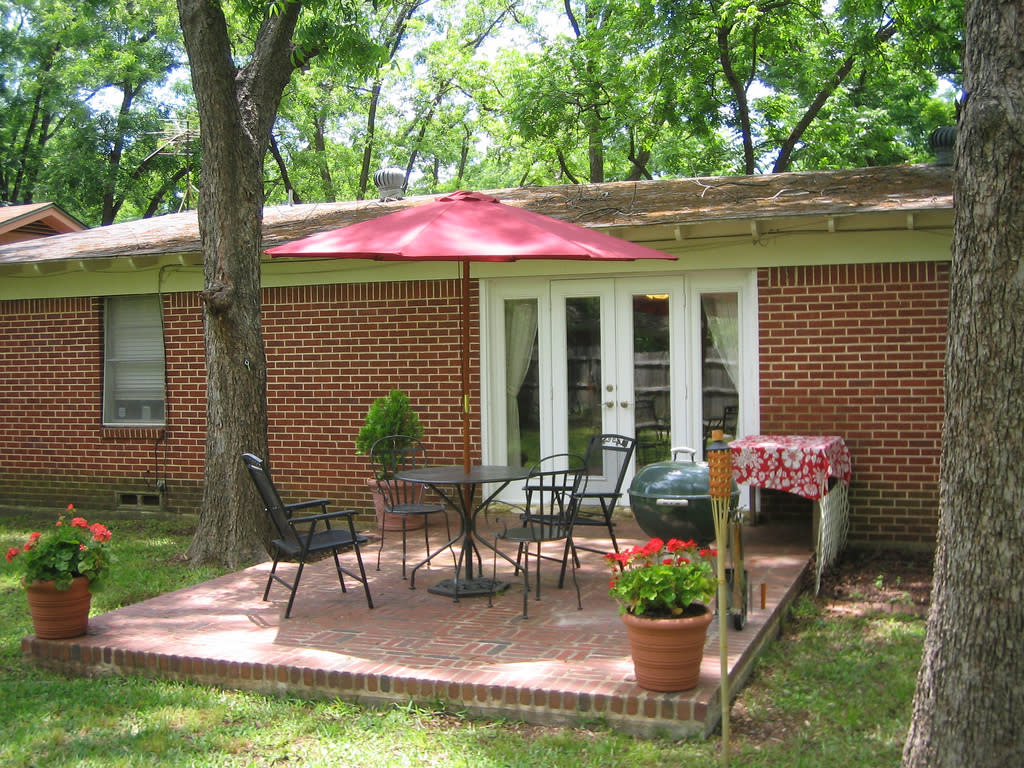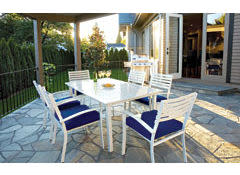Yard makeovers for $500 or less

MORE AT CONSUMERREPORTS.ORG
You don't need big bucks to improve your yard. But with a $500 budget, you'll have to prioritize. Start with a plan for the entire yard. That way you can tackle projects one at a time knowing that everything will work together. Then grab a shovel and get started.
Boost curb appeal
Overgrown bushes, bare spots, and unkempt lawns can make your home look sloppy and uninviting. It's sometimes easier to get rid of an over-grown shrub and start again. Many bushes won't survive a hard pruning or take years to look good again.
Create layers to add interest. Trees and bushes and plants that won't grow beyond 3 to 4 feet high provide background. Plant trees or tall bushes at the edge of a house to frame the view of the house, or in front of blank walls. Ground covers create interest lower to the ground and control weeds. Next, use a shovel to create a clear edge between the lawn and the bushes. Fill the area with mulch for a neat look.
Finish off the look with containers filled with colorful plants in prominent places, near the front door and along walkways. Stretch your budget by buying younger, smaller trees, bushes, and plant

s. Trade clippings with friends.
Don’t forget the front door. Many doors take only a quart of paint, so they’re a great place to try bolder hues. Neutral hues tend to play best, though that doesn't mean you have to settle for white. Take a cue from other homes in the neighborhood, as well as nature. Ochre and forest green play well in wooded regions, while earth tones are suited to desert landscapes. Consider the architecture, too. For example, if your home's facade has brick or natural stone elements, choose a complimentary color. Color-matching software apps from manufacturers and retailers let you snap a picture of those components and upload coordinating hues.
When choosing color, always err on the darker side, since what you see on the paint chip is likely to look darker than what ends up on your house, due to the softening effects of natural light. Many of our top-rated paints are also the most-budget friendly. Several by Glidden, Behr and Valspar did very well in Consumer Reports' exterior paint tests.
Create entertaining areas

Don't make the mistake of thinking you can have only one spot to gather outdoors. Areas near the kitchen are good for the grill and a dining table and chairs. Create gathering spots near a patio or French doors with chairs, sofas, and end tables. Match the size of the entertainment area to the average number of people you normally entertain, not to the once-a-season blowout.
New furniture—not to mention patios and decks—can make a serious dent in a $500 budget, so if you can, work with what you have. Dress up furniture with new water-resistant chair pads and tablecloths. Wash patios and decks with a household cleaner or mild bleach solution to remove dirt and mildew. Opaque deck stains lasted the longest in Consumer Reports' wood stain tests, at least three years. But they hide wood grain and can peel, chip, and crack like paint, making refinishing a big job. Consider semitransparent stains which let the wood grain show through but need to be reapplied every two to three years. Some clear stains have also done well in our tests, but you’ll need to reapply them more frequently.
Furniture finds. If your furniture is too far gone, our tests have found that low-priced furniture doesn't have to be flimsy. Look for tight, well-fitted joints on wood furniture. The wood should be sanded smooth all over, not just on tabletops and armrests. Painted surfaces should be uniform, with no drips, ripples, or missed spots. There should be no sharp, unfinished edges on metal furniture; check under the edge of the table, where knees may touch, as well as the underside of armrests.
The nuts and bolts holding pieces together should be hidden or capped. The caps aren't just for looks; they help keep moisture away from screws and bolts. If fasteners are exposed, are they made of stainless steel, which won't rust. If literature on the floor sample doesn't provide the information you need, ask a clerk or ask to see the assembly instructions. Finally, check that the individual pieces are rigid. Wiggle table and chairs to see whether they wobble. Slight flexing is okay.
Add some privacy

Whether you want to screen ugly views, escape from nosy neighbors, or mask noise, there are inexpensive options. Premade wood lattice panels and climbing vines take up less space than trees and screening shrubs. Plus you'll have enough money left over to plant perennials and ground covers for added interest and color. Another option: Attach stainless-steel eye hooks to walls, fences, or posts and string fishing wire between the hooks. Vines can be grown on the wire. Water features, which can help drown out noise, don't have to be elaborate or expensive. Recirculating pumps can cost as little as $50 and can be added to large pots you already own. Ready-to-install fountains are available for less than $200.
Natural screening. Existing trees and hedges can also serve as a background for an intimate area that can be used to escape the hustle and bustle of the neighborhood. Areas outside ground-floor master bedrooms and corners of your property are other prime places for smaller privacy zones. Create a refuge by blocking views of the larger yard with smaller, lower accent trees, a couple of evergreen bushes, or even a few large containers filled with tall plants. Add two folding chairs and a small table and you're done.
Consider the environment

Weaning your yard and lawn of chemicals and high-maintenance plants can save you time and money in addition to being good for the environment. Native plants are already adapted to your area and often require less water and care. Visit nearby nature preserves and botanical gardens to see what's growing in shady areas, near water, and in full sun. Use your cell-phone camera to take pictures, and show them to staff at local nurseries, where many of those same plants are available. Nursery and botanical-garden staffs are good sources of information. Cooperative-extension services also offer free information suited to your area. Find your extension by going to www.csrees.usda.gov.
Collecting rainwater is another way to save money and natural resources. The typical single-family suburban household uses at least 30 percent of its water outdoors for irrigation. Rooftop collection systems are available, but simply diverting your downspout into a covered barrel with a spigot is an easy, low-cost approach. Cover or seal barrel tops to prevent animals and children from entering and mosquitoes from breeding.


